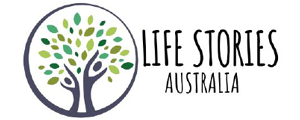‘Genes’, as the American academic and neuroscientist Robert Sapolsky has written ‘…are not about inevitabilities; they’re about potentials and vulnerabilities’. Good genes don’t necessarily result in good outcomes – in sport or anything else. But they sure can help!
My latest book – ‘It’s in the Genes, Australian Football Families’– tells the stories of some of the many families who have produced multiple generations of VFA/VFL/AFL/AFLW footballers stretching back to the late 19th century.
Included are the Rankin/O’Donnell dynasty who have produced five generations of players across three centuries; the Spargos who have four generations in one line; the Pannam /Richards and Cordner clans with similar numbers; the six McShane brothers who wore Geelong colours in the VFA and VFL; the great Laurie Nash and his father Bob – the first father and son to captain VFL clubs; champion fathers and sons Haydn Bunton senior and junior, the Whittens, Ablett’s, Tucks, Fletchers and father and daughter Greg and Erin Phillips.
The magicians from the Tiwi Islands – the Riolis and Longs – are also featured, as are many sibling groups including the Selwoods, Twomeys, Strangs and the Murphy, Collier and Coventry brothers all of whom were members of the famous Magpie ‘Machine’ of the late 1920s. And A chapter on Ron Barassi senior and junior looks at the story of a ‘fallen father’ and an ‘immortal son’ from a slightly different perspective.
My motivation to write this book came after a discussion about football families with one of my seven grandsons. When I began to research just how many ‘football’ families have produced multiple generations of players at elite level I was hooked. Now after four years of extensive research, a multitude of phone and in-person interviews, painstaking ‘fact checking’ (assisted by my meticulous editor Mic Looby) and countless hours in front of my laptop, the book is completed and now published.
It was difficult, demanding work that at times felt like I was writing 19 or 20 books simultaneously. At times it felt like I’d taken on too much. At one stage I even considered giving up. By then I was deep into the ‘third quarter’ of the ‘game’ and thought about what the likes of Ron Barassi had said about never ‘giving up’. I gritted my teeth and kept going. I’m so glad I did.
I’m delighted with the outcome and overall, I absolutely enjoyed the process. The best parts were the face-to-face interviews with some of the players whose stories are featured and are still here to talk about their football careers; and with the families of those no longer with us. The pride in their football-playing relatives shown by so many of those I met with was heart warming and humbling. The ‘inside stories’ I became privy to and the family mementos, photographs and trophies (including a couple of Brownlow Medals) I was shown, will always be regarded by me as a measure of the trust I was afforded. For that I feel greatly privileged. I also had a great deal of ‘fun’ and much satisfaction as I sat with Wayne James of Splitting Image Colour Studio as he loaded my text into his computer and we watched it ‘emerge’ as a book. Maybe this was how Michelangelo felt as he saw his masterpieces being ‘released’ from the blocks of marble he worked on?
This book is more than stories of shirtfronts, high marks and the pungent smell of liniment and sweaty testosterone charged dressing rooms. It’s also about the dedication of football doctors Ted (senior and junior) and Donald Cordner who played football as amateurs and always put the welfare of their patients ahead of their football ambitions. It’s about the former Collingwood and Richmond champion of the 1920s Charlie Pannam (junior), who bought a small general store in outer suburban Vermont after he retired from football. Charlie became an ever present, avuncular community figure who even paid for junior footballers’ boots and uniforms during the depression when their parents could not. It’s about three generations of Riolis who became legendary footballers in four states and territories and champions for the rights of First Nations peoples. It’s about the likes of Haydn Bunton (who won three Brownlow and three Sandover medals) and Jack ‘Captain Blood’ Dyer (widely known for inventing the drop punt kick and even better known for regularly breaking opponents collar bones). Haydn and Jack were to develop special relationships with down and out teammates and the homeless. And it’s about how football has been an irreplaceable activity that has uplifted and bound communities together during good times and bad….and so much more.
The final phase of this writing odyssey now becomes the marketing of what is a creatively designed, hard cover, 487-page, lavishly illustrated, lovingly nurtured book. It’s not going to make me financially rich but it’s undeniable the process has enriched my life.
It’s in the Genes is available online at destobin.com.au.
Read Board Member Des Tobin’s bio here from Killaghy Publishing.



Follow Us